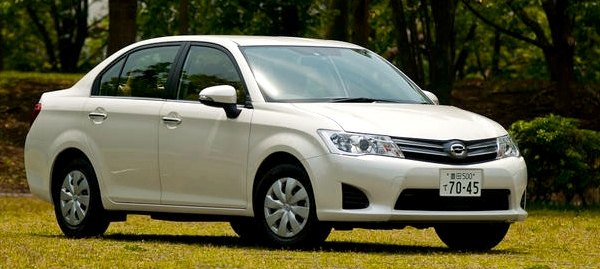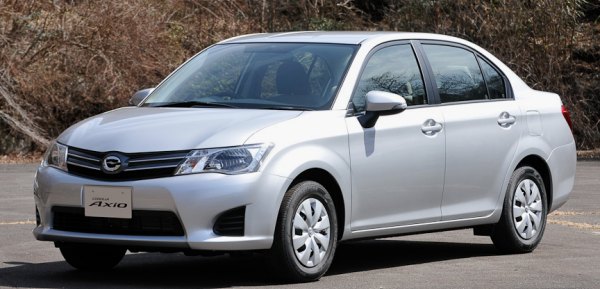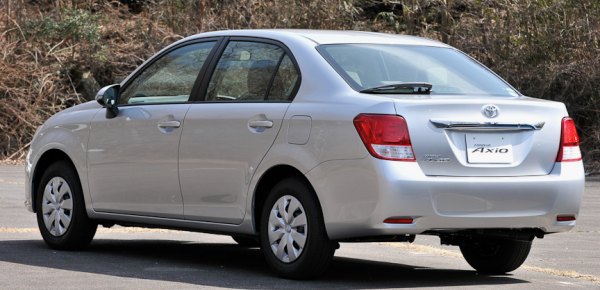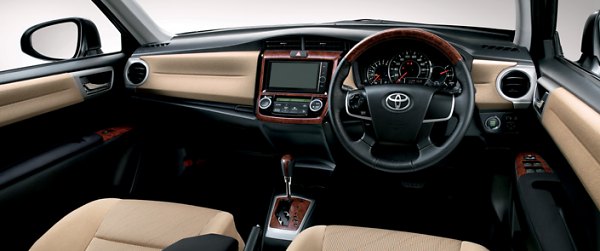|
|
|
Published
on 12
Sep 2013
|
All rights reserved.
|
|

|
The world's most
popular nameplate has reached another milestone! In July, Toyota built
the 40 millionth Corolla, leaving Volkswagen Golf (30 million units)
further behind. 40 million people can't be wrong, so this must be the
world's best affordable car? Of course not. As you might have observed,
the world's most popular car is also the least popular among automotive
journalists. When was the last time you heard it topped a comparison
test? 1966 I think? Yes, the Corolla is that hateful to car
journalists. The
fact that it sells so well is purely down to its low cost, high
practicality and reliability as well as Toyota's good after sales
services. Its success has nothing to do with how the car looks, sounds
and feels, because it has long been known for conservative, boring and
dynamically mediocre. Like a white appliance, you talk about functions
and price rather than fun or desirability.
How about the latest, 11th generation Corolla? To answer this question,
we must first identify which Corolla you mean. Unlike before, this
generation actually consists of 2 different cars. The Japanese version,
sold in only its home market and (unfortunately) Hong Kong, is a
smaller and cheaper car. The world version, to be available in America,
Europe, China and South East Asia among others, is larger and probably
a bit more interesting. We will leave the latter to another article
later on.
Now let's concentrate on the domestic version.

|
Two things you may observe from these pictures. First, the new Japanese
Corolla looks even more boring than the last generation. Its glasshouse
is more upright, losing the sleekness that the last generation
introduced. Its front grille, headlights and taillights have no style
to speak of. The body sides lack any kinds of crease lines or
shoulders. It is so bland that you can't help feeling it gets cheap –
both cheaper to design and cheaper to build. Another thing you will
find is that the car gets smaller. It is 50 mm shorter than the old
Japanese version. Although the wheelbase remains unchanged at 2600 mm,
it is now the shortest in the class. Ditto the 1695 mm body width,
which is still dictated by the domestic tax rules. A new Volkswagen
Golf, for example, is 104 mm wider. No wonder it cannot afford a proper
shoulder line.
Both the reduced size and cheapened looks point to the opposite
direction of market trend. I believe Toyota had a lot of boardroom
debates before making the decision. In the last generation, it
attempted to inject some sportiness to the design to lure back young
drivers. Unfortunately, this did not work. Domestic sales numbers show
that the Corolla slid to 5th place in the car sales chart excluding
K-cars in 2011, registering just over 70,000 sales, while the best
selling Prius outsold it by nearly 4 to 1. As a response, Toyota
decided to skip the young people strategy and return to the no-frills
philosophy. As there was little hope to improve its domestic sales, it
decided to boost profit by cutting costs and building the 11th
generation on the smaller B-platform which underpins small cars like
Vitz / Yaris and Ractis. This explains why the new car looks downgraded
in every way. It also signals a divorce from the overseas version,
which continues to sit on C-segment platform.

|
Using the smaller platform means the new car no longer needs to reserve
space for fitting double-wishbone rear suspension for certain models.
In addition to the upright body profile and thinner seatbacks, it
manages to squeeze out an additional 40 mm of rear legroom. There is
plenty of head and legroom for four regular-size adults, especially
thanks to the nearly flat rear floor. The 3-box saloon's ("Corolla
Axio") 471-liter boot is also a lot larger than those of Golf and other
family hatchbacks. The estate version (Corolla Fielder) is larger
still. Nevertheless, the cabin looks just as cheap and boring as the
exterior. The console looks so aftermarket, the switchgears feel cheap
and the fake wood trims are dreadful. It sounds like orientated to
emerging markets.
Predictably, such a no-frills, conservative car is not going to be
exciting to drive. Its drivers, supposed to be in 40 or 50 years old,
will be pleased with its light and calm (numb) steering, small turning
circle and soft ride. It is as easy to drive as any small cars. On the
downside, there is really no communication between the man and machine.
Its body control, grip and brakes are to be rated near the bottom of
the class. The powertrain also lacks sparkles. The entry-level model is
equipped with 95 hp 1.3-liter Dual-VVT-i engine whose performance is
marginal. Most people would choose the 109 hp 1.5-liter VVT-i, but this
engine is rather old thus no longer shines in both output and
refinement. Manual gearbox is available in Japan, but by far the
majority will opt for the CVT, which is refined as long as you are
light on throttle.

|
To save the game, Toyota added Hybrid version to Corolla last month.
Its whole powetrain, consisting of an Atkinson-cycle 1.5-liter engine,
electric motor, CVT and boot-mounted NiMH battery, is transplanted
straight from Aqua (Prius C), so performance and fuel consumption
should be close. The Aqua looks funkier and have a useful hatchback,
while the Corolla Hybrid might appeal to conservative buyers and
fleets. That said, I don't think it can offset the inherent problems of
the car. Having seen it many times on streets, I still can't get over
its cheap and ugly appearance. It could be a big strategic mistake.
|
Verdict:   |
|
|
|
|
|
|
|
|
|
|
Corolla
Axio 1.3
|
2012
|
| Front-engined,
FWD |
| Steel monocoque |
| Mainly steel |
| 4360 / 1695 / 1460 mm |
| 2600 mm |
Inline-4
|
| 1329 cc |
DOHC 16 valves, DVVT
|
| - |
| - |
95 hp
|
89 lbft
|
CVT
|
F: strut
R: torsion-beam
|
-
|
| 175/65R15 |
1050 kg
|
105 mph (est)
|
13 (est)
|
-
|
|
Corolla
Axio 1.5
|
2012
|
| Front-engined,
FWD |
| Steel monocoque |
| Mainly steel |
| 4360 / 1695 / 1460 mm |
| 2600 mm |
Inline-4
|
| 1496 cc |
DOHC 16 valves, VVT
|
| - |
| - |
109 hp
|
100 lbft
|
CVT
|
F: strut
R: torsion-beam
|
-
|
| 175/65R15 |
1090 kg
|
112 mph (est)
|
11.5 (est)
|
-
|
|
Corolla
Axio Hybrid
|
2013
|
| Front-engined,
FWD |
| Steel monocoque |
| Mainly steel |
| 4360 / 1695 / 1460 mm |
| 2600 mm |
Inline-4, Atkinson-cyle + electric
motor
|
| 1496 cc |
DOHC 16 valves, VVT
|
| - |
| - |
Engine: 74 hp
Motor: 61 hp
Combined: 100 hp
|
Engine: 82 lbft
Motor: 125 lbft
|
CVT
|
F: strut
R: torsion-beam
|
-
|
| 175/65R15 |
1140 kg
|
105 mph (est)
|
11 (est)
|
-
|
|
|
|
|
|
Performance
tested by: -
|
|
|
|
|
|
|
|
|
Copyright©
1997-2013
by Mark Wan @ AutoZine
|
|